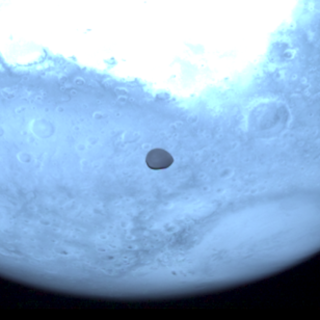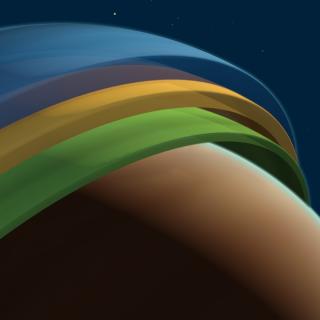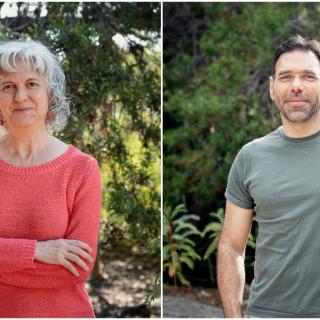Las primeras Jornadas de Puertas Abiertas en el Observatorio del Roque de los Muchachos (La Palma) correspondientes al año 2001, celebradas el pasado domingo, 15 de julio, y organizadas por el Instituto de Astrofísica de Canarias, atrajeron al Observatorio a 2.272 visitantes. Durante la jornada se pudieron visitar seis instalaciones distintas: el telescopio "William Herschel", el telescopio "Isaac Newton", el telescopio Nacional Galileo, el telescopio Nórdico Óptico, el telescopio "Mercator" y el experimento HEGRA. La organización contó con la colaboración de 48 personas, entre astrónomos de las distintas instituciones usuarias del Observatorio, personal propio de apoyo (administrativo, sanitario y de mantenimiento), además de diversas entidades como la agrupación de astrónomos aficionados "Isla de la Palma", AEA, Guardia Civil y Cruz Roja. Las visitas se realizaron en tres idiomas: español, inglés y alemán, y los 2.272 visitantes fueron divididos en 84 grupos distintos, cifras que superan considerablemente las de las jornadas celebradas el pasado año. La novedad en esta ocasión fue la posibilidad de visitar el telescopio "Mercator", el "benjamín" del Observatorio, que entró en funcionamiento el pasado mes de mayo. Se recuerda que las próximas Jornadas de Puertas Abiertas tendrán lugar el domingo 9 de septiembre.
Advertised on
It may interest you
-
 ESA’s Hera mission for planetary defense performed a flyby of Mars, as part of its gravitational assistance manoeuvre to shorten its journey to the binary asteroid system Didymos. During the flyby, the spacecraft came around 5000 km from the surface of Mars, having also the opportunity to obtain images of its two moons, Deimos (during the approach) and Phobos (when departing Mars). Julia de León, Javier Licandro, and George Prodan, researchers at the Instituto de Astrofísica de Canarias, participate in this mission, successfully launched from Cape Cañaveral, Florida (USA) on October 7, 2024Advertised on
ESA’s Hera mission for planetary defense performed a flyby of Mars, as part of its gravitational assistance manoeuvre to shorten its journey to the binary asteroid system Didymos. During the flyby, the spacecraft came around 5000 km from the surface of Mars, having also the opportunity to obtain images of its two moons, Deimos (during the approach) and Phobos (when departing Mars). Julia de León, Javier Licandro, and George Prodan, researchers at the Instituto de Astrofísica de Canarias, participate in this mission, successfully launched from Cape Cañaveral, Florida (USA) on October 7, 2024Advertised on -
 An international team, in which the Instituto de Astrofísica de Canarias participates, has succeeded in mapping for the first time the three-dimensional structure of the atmosphere of an exoplanet, that is a planet beyond the Solar System. This research, published today in Nature , has been able to discover very strong winds that carry chemical elements such as iron and titanium, which create certain weather patterns through the planet's atmosphere. This mapping opens the door to more comprehensive and detailed studies of the chemical composition and climate of other planets. Enric PalléAdvertised on
An international team, in which the Instituto de Astrofísica de Canarias participates, has succeeded in mapping for the first time the three-dimensional structure of the atmosphere of an exoplanet, that is a planet beyond the Solar System. This research, published today in Nature , has been able to discover very strong winds that carry chemical elements such as iron and titanium, which create certain weather patterns through the planet's atmosphere. This mapping opens the door to more comprehensive and detailed studies of the chemical composition and climate of other planets. Enric PalléAdvertised on -
 The Instituto de Astrofísica de Canarias (IAC) has again shown its high quality in the field of international research. Two of its Research Professors, Carme Gallart and Enric Pallé, have been selected by the European Research Council (ERC) to receive ERC Advanced Grant s , the most prestigious and competitive grants of the Horizon Europe programme. This call for proposals is aimed at researchers who are leaders in their fields, with consolidated records and highly innovative proposals. Each grant can reach up to 2.5 million euros over five years, with additional funding for specific needsAdvertised on
The Instituto de Astrofísica de Canarias (IAC) has again shown its high quality in the field of international research. Two of its Research Professors, Carme Gallart and Enric Pallé, have been selected by the European Research Council (ERC) to receive ERC Advanced Grant s , the most prestigious and competitive grants of the Horizon Europe programme. This call for proposals is aimed at researchers who are leaders in their fields, with consolidated records and highly innovative proposals. Each grant can reach up to 2.5 million euros over five years, with additional funding for specific needsAdvertised on